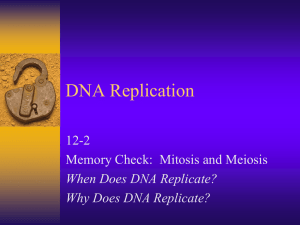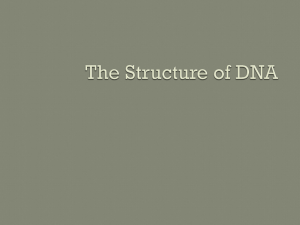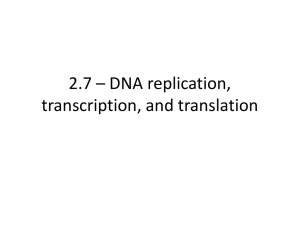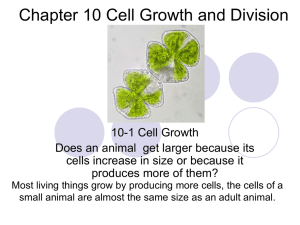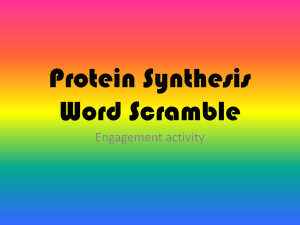DNA Replication!
advertisement
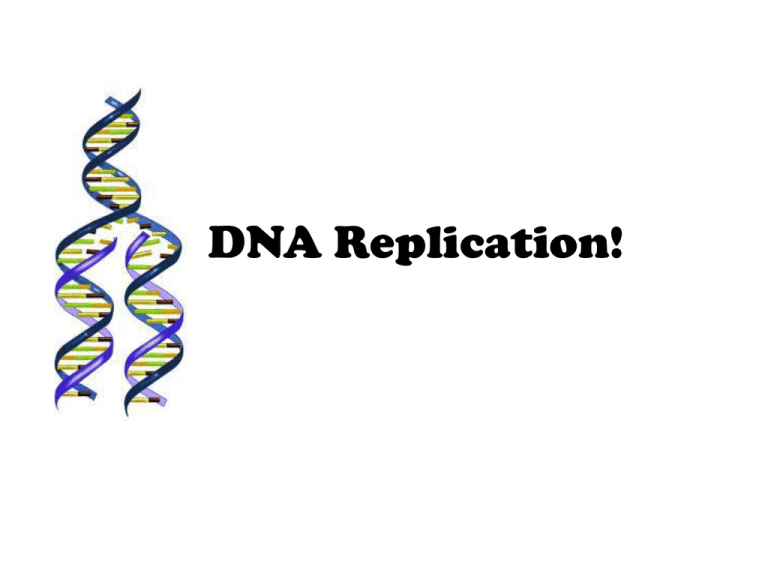
DNA Replication! Do Now • When do cells replicate? • What enzymes are involved? How many can you name? • How do the cells replicate?Explain. Objectives • Explain what replication is and why it must occur in our bodies. • List the different enzymes involved in each step of replication and what they do. • Compare and contrast leading vs. lagging strands. Read the cartoon on replication… • How many daughter strands are formed? • Where do the nucleotides come from in the new strand of DNA? • Which direction does DNA replication occur? • What type of molecules are used in DNA replication? Semiconservative Replication Parental strands of DNA separate Each strand serve as template DNA molecules produced have one strand of parental DNA and one daughter strand Enzymes involved • Helicase- Unzips the DNA strand. • Primase- RNA Primer (tells the next enzyme where to begin!) • DNA polymerase- adds nucleotides. • DNA ligase- links together fragments. Steps to DNA Replication 1. Unwinding • DNA helicase (enzyme) unwinds and unzips the DNA – breaking the hydrogen bonds between the strands • RNA primase adds a short segment of RNA, called an RNA primer, on each DNA strand. Steps to DNA replication DNA unwinds at different spots (Origins) At the replication fork, an enzyme breaks the hydrogen bonds between the bases. Steps to DNA Replication 2. Base Pairing • DNA polymerase (enzyme) adds complementary nucleotides to parent DNA strand • Only adds to 3’ end of new DNA strand 2. Base Pairing (cont.) • Two daughter strands of DNA are made differently – Leading Strand- Built continuously with out breaks – Lagging Strand- makes several small fragments of DNA • Built discontinuously • Pieces are called Okazaki Fragments • Fragments are connected by DNA Ligase DNA Replication Steps to DNA Replication 3. Joining • DNA Polymerase removes RNA Primer and fills it in place with DNA nucleotides • DNA ligase links two sections Steps to DNA Replication (cont.) • 4. There are 2 daughter strands- one leading strand and one lagging strand Leading and Lagging Strands • http://www.fed.cuhk.edu.hk/~johnson/teac hing/genetics/animations/dna_replication.h tm Mistakes in DNA • DNA replication takes a lot of energy. • During replication, mistakes are made. (mutations) • Enzymes “proof read” and repair the mistakes. Comparing DNA Replication in Eukaryotes and Prokaryotes • Eukaryotic DNA unwinds in multiple areas as DNA is replicated. • In prokaryotes, the circular DNA strand is opened at one origin of replication. Do Now • Label the DNA Replication Diagram


